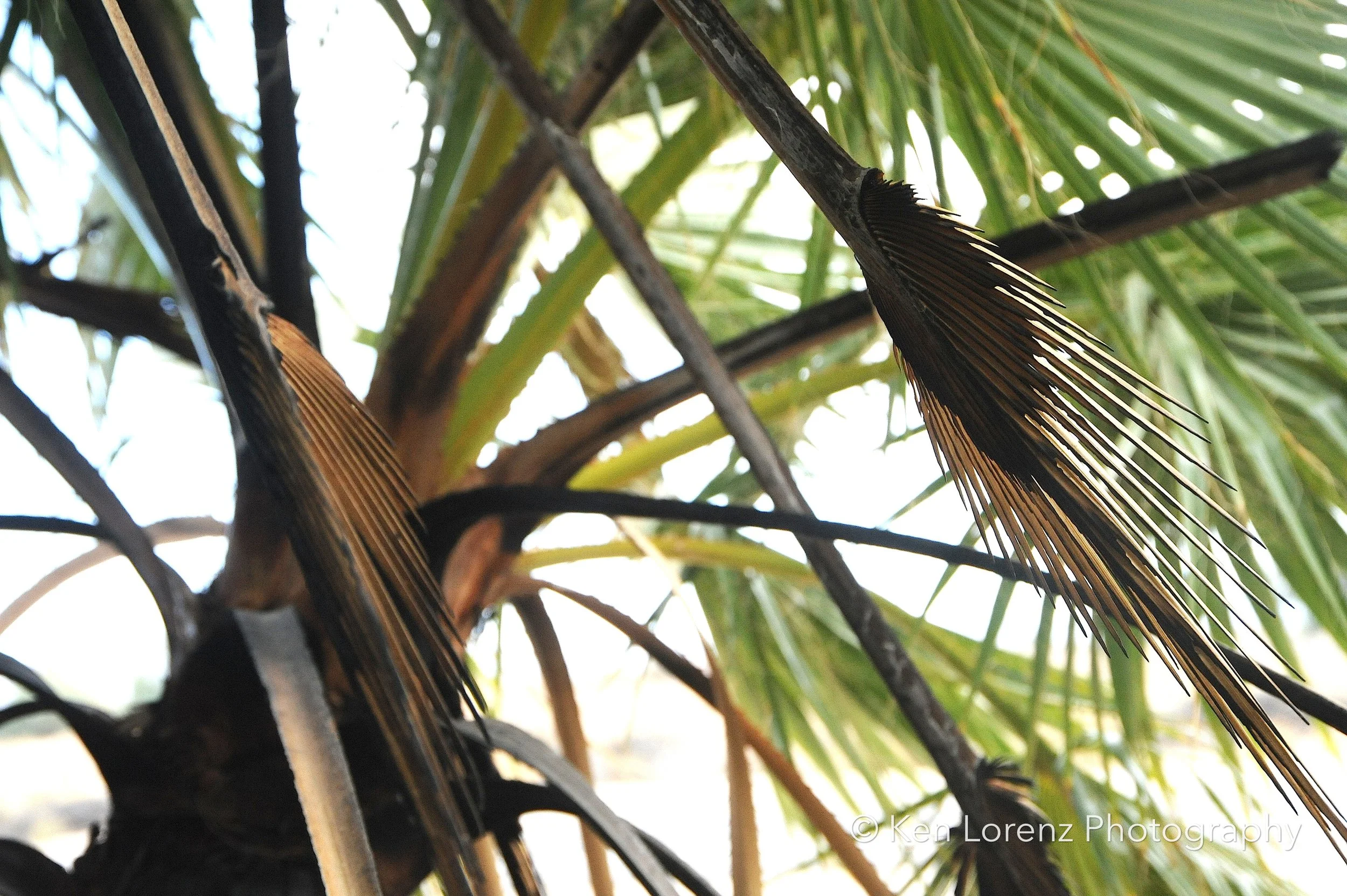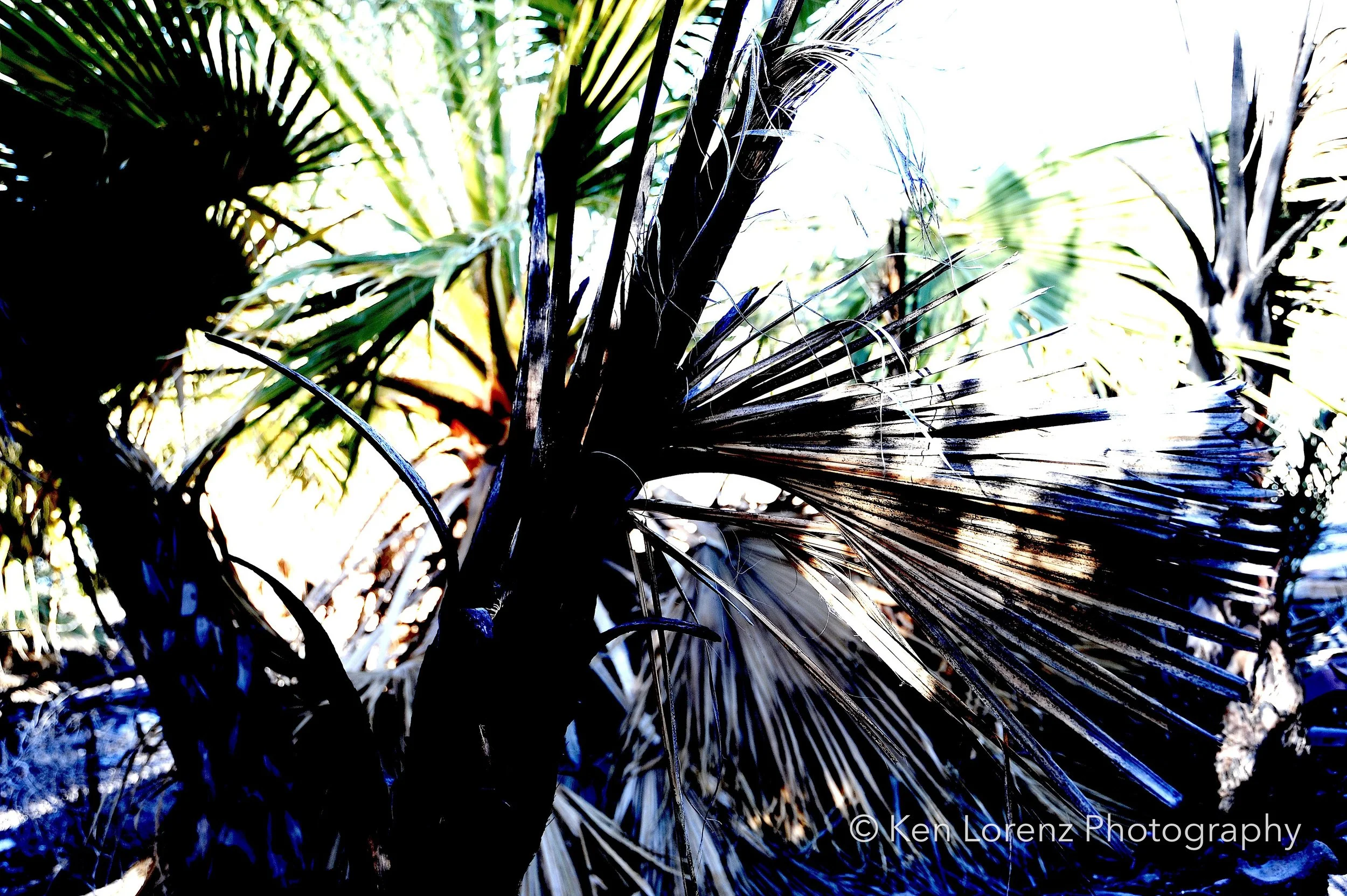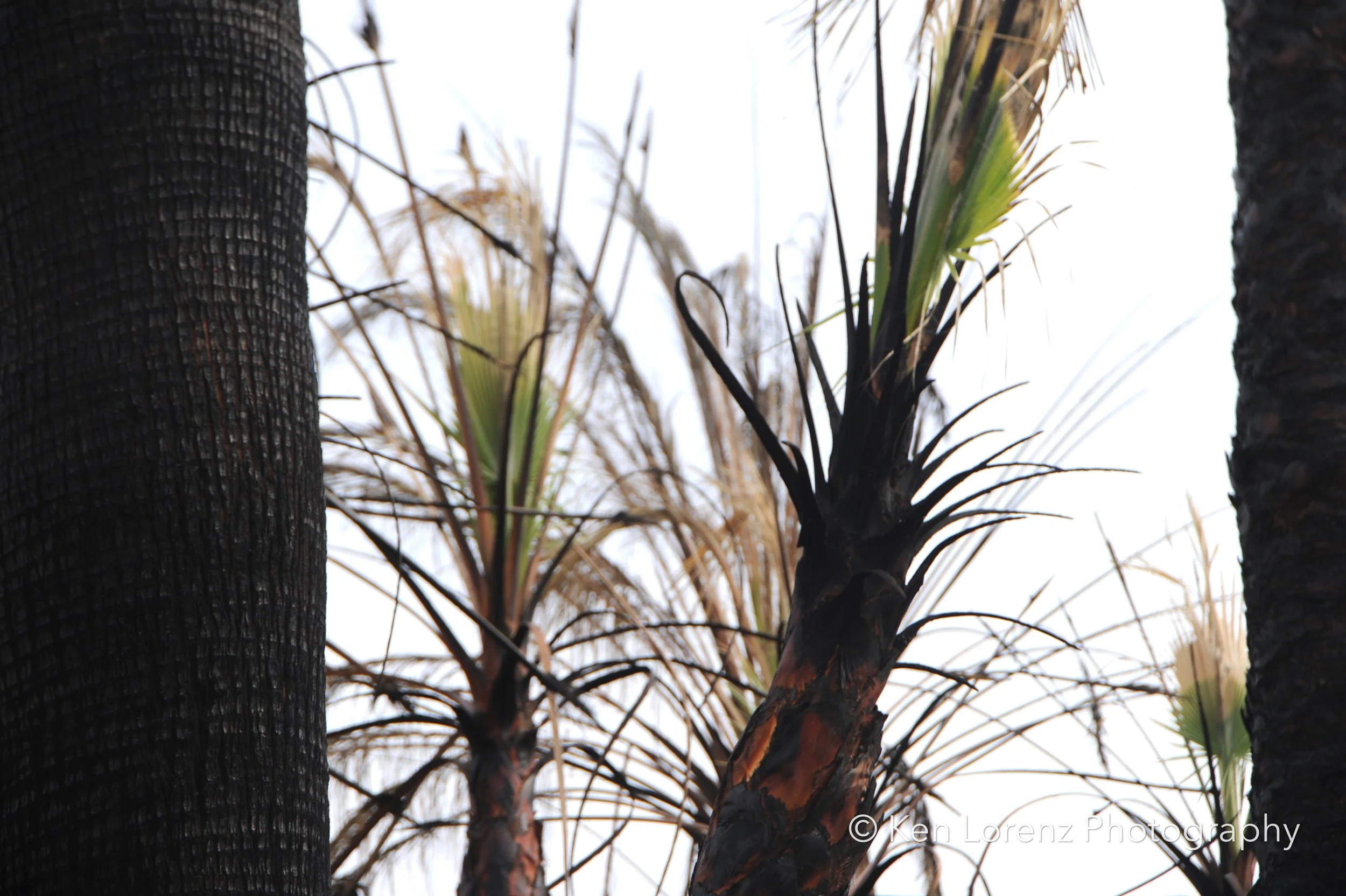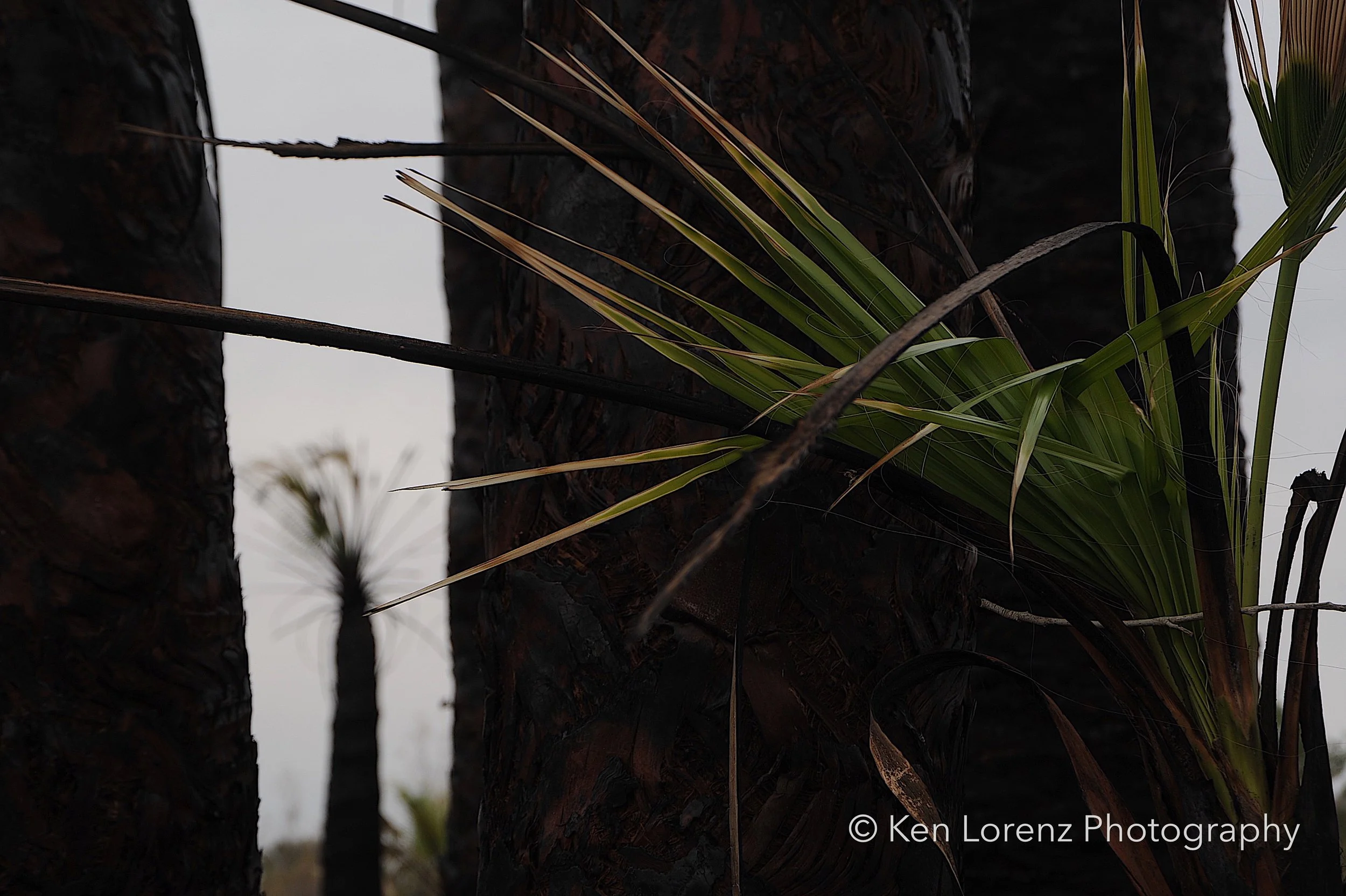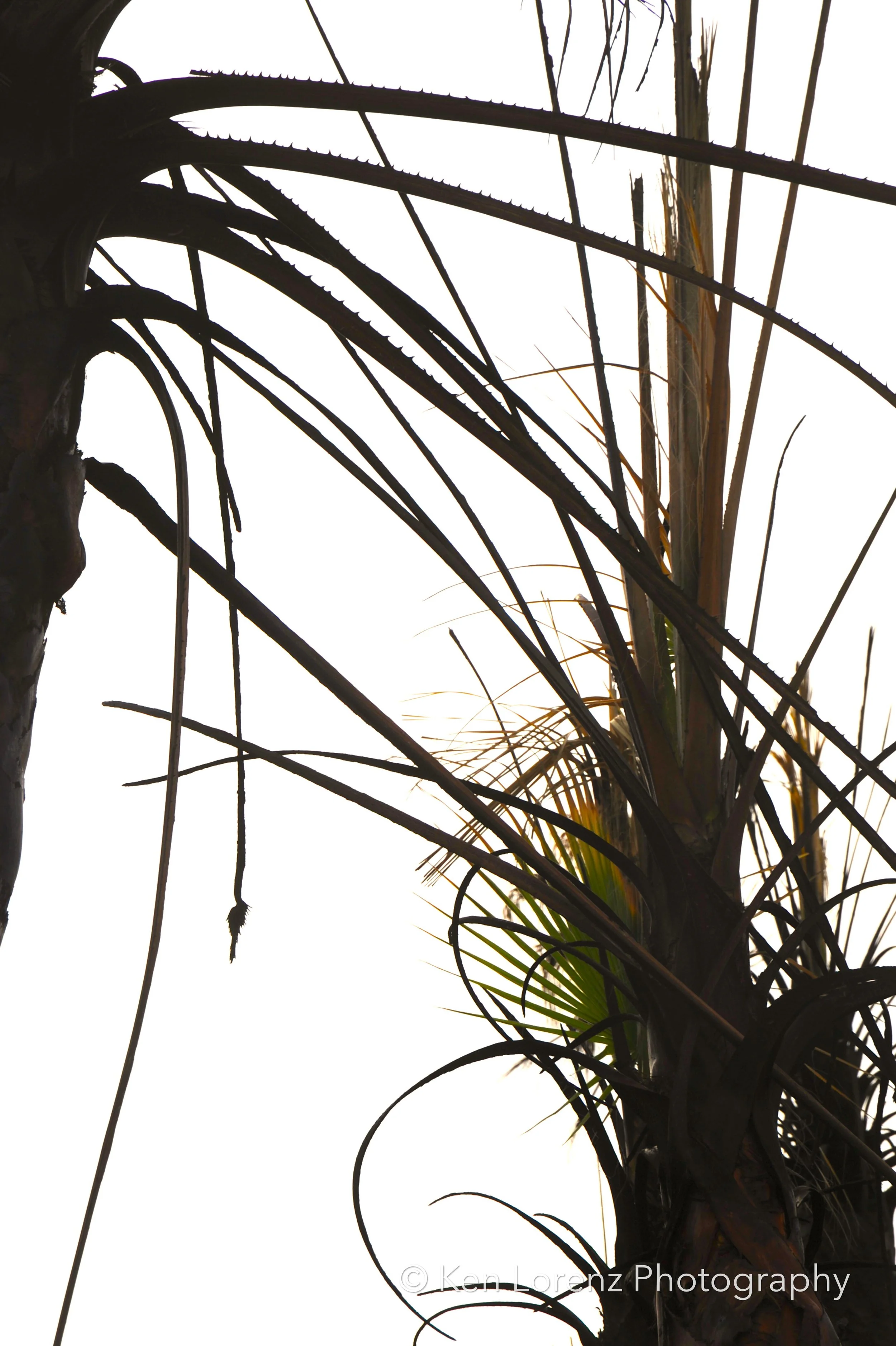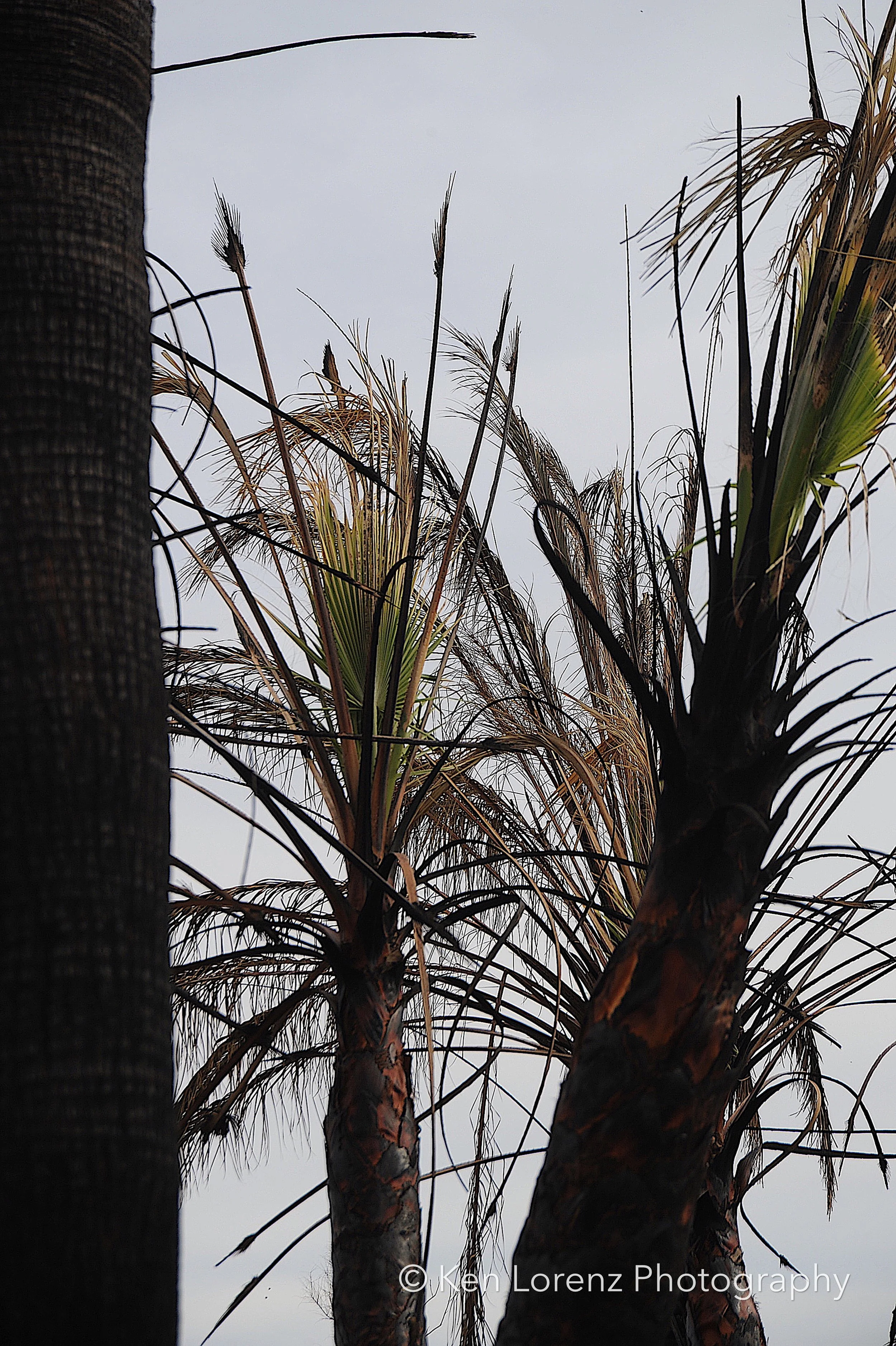Burnt Palms
Beauty in Destruction…
9 of 43 in portfolio.
Located just two miles southeast of the Salton Sea in Southern California, the town of Niland is a place suspended in time. With a population hovering around 880, it boasts a single grocery store, one restaurant, a post office, a gas station, a lone and rather wistful real estate agent, and a laundromat that shut its doors three years ago. To understand the scale of Niland, you need only drive from one end of town to the other — a journey that takes about 48 seconds.
On the outskirts of town, veering slightly left into the desert, something strange catches the eye: dozens of blackened columns rising eerily from the earth. About a quarter mile in, the scene becomes clearer, and more unsettling. A massive fire has scorched an entire grove of Washingtonia filifera, more commonly known as California Fan Palms. These trees, once towering over 160 feet high, now stand as spectral remnants — brittle, ash-stained, and hollowed by flame. The air is thick with the scent of scorched earth, and yet, these palms still hold their ground. Defiant and ghost-like, they seem to wait, proud and stubborn in their ruin. Regrowth may take a decade, but in this moment, they feel volatile — angry, even.
My interest in this scene is rooted in a creative philosophy known as Destruction Aesthetics — the pursuit of beauty in what has been broken, burned, or left to decay. The term itself is not widely known, but its spirit has lingered in art history for centuries. In 1937, Paul Valéry alluded to this sensibility in La Mémoire des ruines, where he observed that destruction can lead to transformation — that “a reshaping of things comes from destruction,” and when the original whole is lost, a new whole can emerge. Valéry’s perspective shifted how I enter spaces of devastation. It pushes me beyond documentation, toward interpretation — toward a conceptual engagement with what remains.
Before I even begin photographing, I take the time to clarify my intention. I establish goals, reaffirm objectives, and consider the emotional atmosphere of the space. Here, amidst the burnt palms, the landscape was overwhelmingly monochromatic — wrapped in layers of black and gray, punctuated only by the occasional, jarring scream of color. The sadness was palpable. And yet, my task was not to dwell in despair, but to uncover grace within the wreckage. The challenge became not just to find beauty in destruction, but to restore a measure of visual dignity to these battered trees.
In my four decades behind the lens, the last ten years have marked a significant shift in how I approach image-making. I’ve moved away from simply taking photographs and instead leaned into making them — slowly, thoughtfully, and with a mindfulness that now guides my process. What we choose to see — and how we choose to frame it — is shaped by where we stand in time, space, and thought. This evolving perspective compels me to reflect more deeply on each photograph’s purpose, asking myself three questions again and again: What am I attempting to achieve? Did I achieve it? And was it worth doing at all?
In his book Art and Fear, Ted Orland offers a powerful insight: “Art that deals with ideas is more interesting than art that deals with technique,” and “vision is always ahead of execution.” Those words resonate deeply with me. I have come to understand that technique, while important, is never the endpoint. The true heart of the work lies in the idea — in the impulse to understand something larger than the image itself.
With Burnt Palms, part one of the Beauty in Destruction series, I am not simply recording what remains after fire and time have done their work. I am listening to what the landscape is trying to say — and searching, always, for the quiet poetry found in the ashes.
